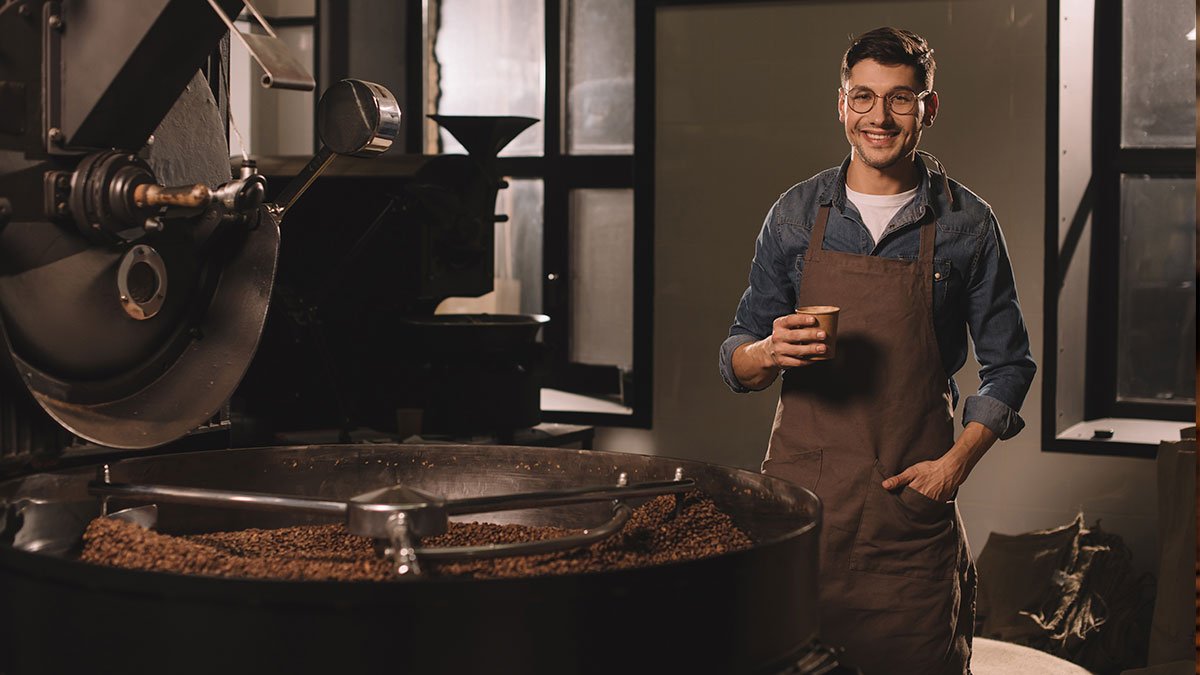Discover the fascinating research that reveals how slow roasting creates a gentler, more beneficial cup of coffee
For millions of coffee lovers worldwide, that first sip of morning coffee is nothing short of sacred. It is the ritual that transforms us from groggy zombies into functioning human beings, the warm embrace that signals the start of a new day. But for many, this beloved ritual comes with an unwelcome side effect: stomach discomfort, heartburn, and digestive distress.
If you have ever felt torn between your love for coffee and your stomach's protests, you are not alone. Studies suggest that up to 25% of coffee drinkers experience some form of gastrointestinal discomfort from their daily brew. What if the solution was not to give up coffee, but to change how it is roasted?
Enter the world of slow roast coffee: a philosophy gaining attention for superior flavor and potential health benefits. Recent research shows that roasting speed and temperature can affect both digestive impact and nutritional value. The findings are compelling enough to make even devoted dark roast fans reconsider their routine.
The Hidden Chemistry of Your Coffee Cup
Coffee is one of the most chemically complex beverages we consume, with over 1,000 compounds influencing flavor, aroma, and biological effects. During roasting, beans undergo the Maillard reaction, pyrolysis, and caramelization. Each process shapes the final chemistry, and each is sensitive to temperature and time.
Typical roast temperatures: 150°C to 230°C (300°F to 450°F). Many commercial operations favor higher heat for shorter periods to maximize efficiency. This choice can trade off flavor development and potential health benefits.
The Acid Test: How Roasting Affects Your Stomach
Coffee naturally contains acids such as chlorogenic acids, quinic acid, and citric acid. These shape flavor and can influence stomach tolerance. A Nutrients review by Nehlig (2022) notes that darker roasted coffee appears less effective at stimulating gastric acid, likely due to higher levels of N-methylpyridinium (NMP) and reduced chlorogenic acids and trigonelline.
Practical takeaway: longer and more thorough roasting increases NMP, which correlates with less gastric acid stimulation.
Slow roasting can reach similar NMP levels with gentler heat, which may preserve other beneficial compounds. Mechanistically, NMP seems to impair prosecretory gastric acid expression, a promising insight for those with reflux or sensitive digestion.
The Antioxidant Advantage: Preserving Coffee's Health Benefits
Coffee is a major source of antioxidants. Among the most studied: chlorogenic acids (CGAs), linked to anti-inflammatory effects, blood sugar regulation, and cardiovascular support. CGAs are heat sensitive, so they degrade during roasting.
Fuller and Rao (2017) reported higher CGA concentrations in medium roasts than in dark roasts in both hot and cold brew extractions. A Food Science & Nutrition analysis similarly observed significant reductions in trigonelline and total CGAs with darker roasts.
Balance matters: slow roasted medium profiles may maintain stomach comfort while preserving more CGAs. Meanwhile, Maillard-derived melanoidins form during roasting and contribute additional antioxidant capacity.
The Enzyme Factor: Preserving Nature's Catalysts
Enzymes are heat sensitive. Although direct evidence comparing enzyme activity in slow versus fast roasted coffee is limited, food science principles suggest lower temperature, longer time profiles are more conducive to enzyme preservation.
The Maillard Reaction: A Double-Edged Sword
The same reactions that create flavor can also generate thermal contaminants at high temperatures. Reviews note compounds such as acrylamide, furan derivatives, polycyclic aromatic hydrocarbons, and advanced glycation end products. Acrylamide formation rises sharply with temperature. Gentler profiles can help minimize these while retaining desired flavor development.
The Digestive Benefits: Beyond Acidity
Beyond acidity, research points to antioxidant, anti-inflammatory, and pro-motility effects in the gastrointestinal tract. When processed thoughtfully, coffee can support digestive health rather than undermine it.
The Research Reality Check: What We Know and What We Do Not
Much literature compares light versus dark roasts, not slow versus fast methods. A 2003 randomized, double-blind study found no marked difference in symptoms between two roast processes in sensitive individuals, but the sample was small and did not isolate slow roasting. More modern, targeted studies are needed.
The Individual Factor: One Size Does Not Fit All
Genetics, microbiome, health conditions, and flavor preferences vary person to person. Some benefit most from stomach-friendly darker profiles. Others prioritize antioxidants and choose medium roasts. Slow roasting offers flexibility to fine-tune outcomes.
The Practical Application: What This Means for Coffee Lovers
- For sensitive stomachs: Choose slow roasted darker profiles that build NMP while reducing harsh acids.
- For health optimization: Consider slow roasted medium profiles that balance CGA preservation and comfort.
- For flavor seekers: Slow roasting can unlock complexity without burnt or bitter notes.
- For quality assurance: Prefer transparent roasters who share time and temperature profiles.
The Future of Coffee: Where Research Is Heading
- Precision roasting: Fine control of temperature curves for targeted outcomes.
- Biomarker studies: Measuring health effects in humans with modern analytics.
- Microbiome research: Personalizing roast selection by gut profile.
- Sustainable processing: Gentler profiles can align with lower energy and better outcomes.
Making the Switch: How to Find and Enjoy Slow Roast Coffee
- Seek specialty roasters: Ask about roast curves and development time.
- Look for cues: “Low and slow,” “gentle roasting,” or “extended development time.”
- Start with medium: A friendly balance for newcomers.
- Listen to your body: Track digestion, energy, and comfort.
- Try cold brew: Extraction differences can complement roast choice.
The Bottom Line: A Balanced Perspective
Coffee is one element of a healthy lifestyle. Small improvements compound over time. While more head-to-head evidence on slow versus fast roasting will help, existing data support slower, more controlled profiles for flavor and potential health advantages. If slow roasting makes coffee gentler on the stomach while preserving beneficial compounds, that is meaningful for daily drinkers.
References
- Nehlig, A. (2022). Effects of Coffee on the Gastro-Intestinal Tract: A Narrative Review and Literature Update. Nutrients, 14(2), 399. https://pmc.ncbi.nlm.nih.gov/articles/PMC8778943/
- DiBaise, J. K., et al. (2003). A randomized, double-blind comparison of two different coffee-roasting processes on development of heartburn and dyspepsia in coffee-sensitive individuals. Digestive Diseases and Sciences, 48(4), 652-6. https://pubmed.ncbi.nlm.nih.gov/12741451/
- Fuller, M., & Rao, N. Z. (2017). The Effect of Time, Roasting Temperature, and Grind Size on Caffeine and Chlorogenic Acid Concentrations in Cold Brew Coffee. Scientific Reports, 7, 17979. https://www.nature.com/articles/s41598-017-18247-4
- Bolka, M., & Emire, S. (2020). Effects of coffee roasting technologies on cup quality and bioactive compounds of specialty coffee beans. Food Science & Nutrition, 8(11), 6120-6130. https://pmc.ncbi.nlm.nih.gov/articles/PMC7684626/
- da Costa, D. S., et al. (2023). Thermal Contaminants in Coffee Induced by Roasting: A Review. International Journal of Environmental Research and Public Health, 20(8), 5586. https://pmc.ncbi.nlm.nih.gov/articles/PMC10138461/
- Iriondo-DeHond, A., et al. (2020). Effects of Coffee and Its Components on the Gastrointestinal Tract and the Brain–Gut Axis. Nutrients, 13(1), 88. https://pmc.ncbi.nlm.nih.gov/articles/PMC7824117/



Leave a comment
This site is protected by hCaptcha and the hCaptcha Privacy Policy and Terms of Service apply.